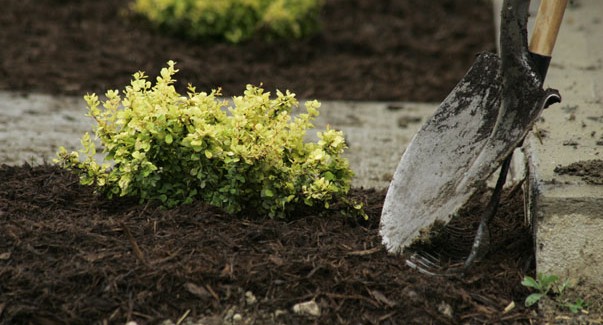Your cart is empty
This Way Is Mulch, Mulch Better
 What would you say if I told you about one little thing you can do for your plants that will reduce watering needs, increase the disease-fighting capabilities of the plants, help them become more heat tolerant, and add to the overall health of the soil? You’d probably say, “Wow, Garden Guy, I always knew you were brilliant!”
What would you say if I told you about one little thing you can do for your plants that will reduce watering needs, increase the disease-fighting capabilities of the plants, help them become more heat tolerant, and add to the overall health of the soil? You’d probably say, “Wow, Garden Guy, I always knew you were brilliant!”
It’s mulch. I wish I could take credit, but the idea really belongs to Mother Nature. So what’s so great about mulch? Several things.
Mulch conserves soil moisture, increases water percolation and moderates soil temperatures. It acts like a layer of insulation and if you use organic material (which I suggest), then it will also help invigorate the soil as it decomposes. Along with all of this, mulch decreases competition from weeds and increases microbiotic activity at root systems. All of this helps our plants resist disease while cooling down the soil and helping to build a plant’s heat resistance.
Anytime you plant a tree, shrub or flowerbed, spread a 2-inch to 4-inch thick layer of mulch on top of the soil. Unless it’s compost, don’t mix the mulch in. Simply allow it to rest on top of the soil, but don’t let it sit against the trunk or stem of your plant. Mulch should be at least 2 inches away from the trunk or stem of the plant and out of the drip line of a tree. This will help protect both the budding roots of the plant and the soil. In fact, you should always cover bare soil with some type of organic mulch.
If you’re wondering which type of mulch to buy, here are a few of my favorites:
Alfalfa Hay:
This is my first choice of mulch for areas planted with vegetables (especially this time of year). It retains moisture and releases a small amount of stimulants that enhance growth.
Bark:
I recommend using larger bark chips because smaller chips tend to smash together and create a seal that prevents oxygen from reaching the soil. And as you know, oxygen exchange is crucial to healthy plant growth.
Compost:
Compost is one of the best top dressings you can install. It makes all types of plants and trees healthier. However, one of downfalls to using compost is that it tends to blow away in strong winds.
Hint: Add a top layer of large bark chips or stones to hold it down.
Eucalyptus or Cedar Bark Chips:
Both act as natural insecticides and are great for dog runs.
Alternatively, you can make mulch from items commonly found in your yard. Simply follow my tips below.
Grass Clippings:
Blend with leaves and apply a 2-inch to 4-inch thick layer.
Leaves:
Spread the layer so that it is no more than 4 inches to 6 inches thick. Consider composting the leaves first.
Pine Needles:
Spread a 5-inch to 8-inch thick layer. Pine needles are slow to break down and have a low pH.
Shredded Tree Chips:
Apply a 4-inch to 6-inch deep layer. Arborists might even give you this for free!
I strongly recommend trying to stay away from rubber, plastic or gravel-based mulch — they don’t break down naturally.

